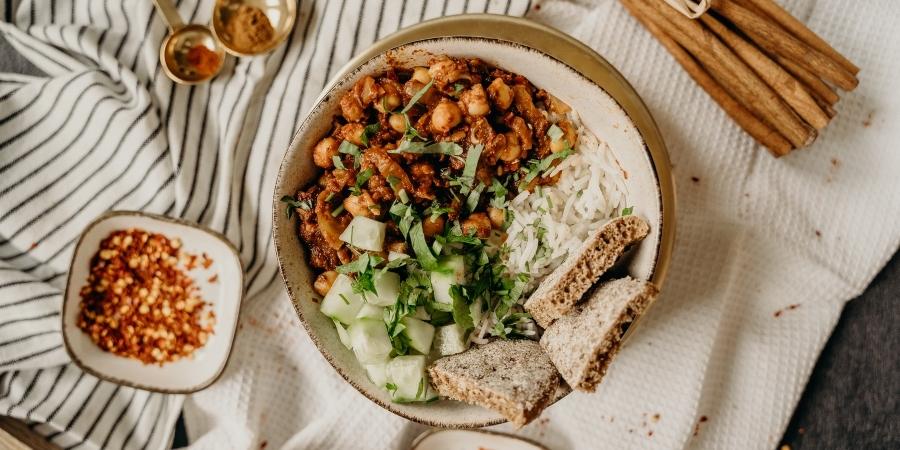THE FIRST STEPS TO GOING PLANT-BASED
Until you get the hang of things, it may help to put together a detailed menu plan with your dietitian. Once you start eating a plant-based diet rich in all the essential nutrients that you need, it will begin to feel second-nature.
Your protein will come from soy products (tofu, tempeh, edamame, etc.), quinoa, beans, lentils, seitan, nuts, peas, and whole grains. To get enough iodine, you should use iodized salt. Omega-3 fatty acids can come from flaxseed, flaxseed oil, chia seeds, walnuts, and canola oil. Some good sources of iron include legumes, broccoli, spinach, and dried fruit. Calcium is actually present in many plant foods, including seitan, tofu, tahini, leafy greens, and calcium-fortified foods.
Sample Menu
Let’s put some of these ingredients together and build a sample menu for one day. The following menu is based on guidelines for a healthy, active adult weighing 65 kg.
Breakfast:
Two slices of rye bread + two teaspoons of natural peanut butter + a quarter cup of soymilk enriched with calcium and vitamin D (can be added to coffee or tea)
Snack:
Banana + a handful of roasted almonds
Lunch:
150 grams of tofu with whole grain rice, stir-fried in low-sodium soy sauce + leafy green salad with olive oil and lemon juice
Snack:
Two whole-grain spelt crackers with a teaspoon of raw tahini and a drizzle of date syrup
Dinner:
Two slices of rye bread + homemade hummus + lentil flour “omelet” + vegetable salad with olive oil and lemon juice
The secret to success is to make foods that you absolutely love. When you fill your home with the sights, smells, and tastes of delicious food — plant-based or otherwise — you will begin to crave those same foods that you have been making. You can even stick with familiar recipes and swap out animal foods with plant-based foods. Instead of using fish, meat or chicken, you can use beans, seitan, or tofu. Instead of using milk, you can swap in almond milk or rice milk. Instead of eggs, make a flax egg.
After three full months of living a completely plant-based lifestyle, it may be time for a blood test. This will ensure that you are getting the proper nutrients, such as vitamin D and vitamin B12.
The first few weeks are always the most difficult when it comes to major lifestyle changes. All you need is some motivation and discipline. It may take some trial and error and a little creativity, but after you’ve been living this lifestyle for a few months, it’ll become second-nature.




